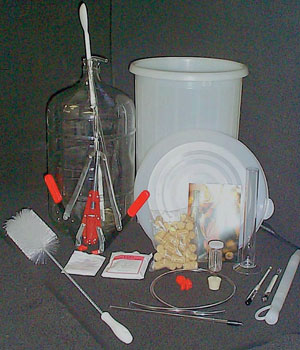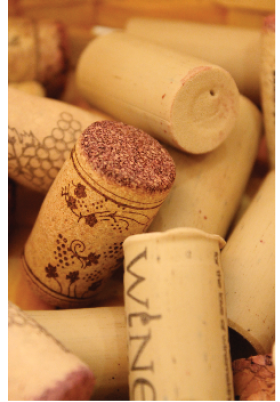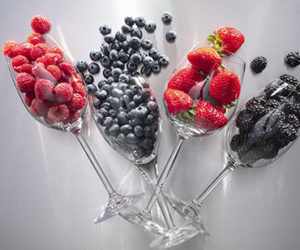Welcome winemakers!
Although you’ve entered a part of the website labeled our “Beginner’s Guide,” we purposely designed it to incorporate the essential skills and knowledge that successful winemakers of all levels must possess. You will find links to each succeeding and preceding article as laid out in our original The Best of WineMaker Beginner’s Guide to winemaking. To make things simple, we begin with an overview of the equipment and the most elementary skills to get you started. Armed with this, we introduce you to the simple practice of making wine from wine kits. Kits are convenient as they virtually guarantee to anybody capable of following simple directions and practicing sound sanitation a successful batch of wine.
Before advancing to the traditional process of making wine from fresh grapes, it is important that a winemaker understands the science involved in the hobby. “Winemaking Science” the second section of this guide will get you acquainted with the chemistry that goes into making wine. Sure it seems like magic, but thanks to years of research, we can now identify, measure and adjust wine components such as acidity, pH and sulfites. This scientific knowledge has caused an increase in wine quality over the years and we believe it will help you as a home winemaker as well.
When you have a grasp on the science end of the hobby, you are ready to begin making wine either directly from grapes or with purchased juice. We’ll walk you through the techniques and equipment you’ll need as well as offer you step-by-step recipes for two of the most popular wine styles in the world: Cabernet Sauvignon and Chardonnay. Finally, in the “Country Winemaking” section, we explore the world of making wine from everything but grapes and give you a raspberry wine recipe to get you started right. From all of us here at WineMaker: We wish you good luck and welcome you to the hobby. Enjoy!
 Basic Equipment
Basic Equipment
To make homemade wine from kits or fresh fruit, the first thing you should do is acquire the appropriate equipment. The simplest way to accumulate your gear is to buy a complete winemaking equipment set from your favorite home winemaking retail shop. Here’s a piece-by-piece overview of the essential equipment that you will need.
Primary Fermenter
The basic wine fermenter is a 7.5–12 gallon (30–46 L) food-grade plastic container. It should come with a cover that allows you to attach an airlock. Even though the volume of wine made in a kit is only 6 gallons (23 L), you will need the extra fermenter volume to deal with foaming during primary fermentation. Only use food-grade plastic containers.
Carboy
A carboy is a six-gallon (23-L) bottle-shaped container made of glass or food-grade plastic. This is where your wine goes after primary fermentation. As with choosing a primary fermenter, getting the right size carboy is crucial. Get a carboy that holds the entire volume of your wine with little or no space left over. The 6.5-gallon (25-L) carboys — widely available at homebrew shops — are unsuitable for kits. They leave too much headspace above the wine, which leads to oxidation and spoilage.
Airlock and Rubber Bung
A bung is a slightly-tapered rubber stopper with a hole in it. The airlock fits into it and helps to form a valve that seals the carboy. The airlock prevents oxygen and spoilage organisms from entering, while allowing fermentation gas to escape. For the most part, glass carboys take a #6.5 bung while plastic fermenters use a #11. Before purchasing a bung, check to make sure it will fit your fermenter. The airlock must be half-filled with water and attached to the carboy. As an alternative, for added piece of mind some people like to fill the airlock with sanitizing solution.
Siphon Hose
A siphon hose is six feet (1.8 m) of food-grade tubing attached to a rigid acrylic rod, with a spacing tip on the end. The siphon hose is used for transferring wine from one container to another while leaving the sediment behind. The rigid rod prevents the tubing from collapsing when draped over the edge of the pail or carboy. The spacing tip on the end of the rod prevents the siphon action from sucking sediment up off the bottom of the pail or carboy. When the hose gets stained from repeated use, throw it away and get a new one. The soft vinyl is difficult to clean properly, and hoses are cheap to replace.
Siphon Bottle Filler
While it’s possible to fill bottles by pinching the end of the hose to stop the flow, a siphon filler makes this a much neater, faster operation. A siphon filler is an acrylic tube with a needle valve on one end; this slips over the end of the siphon hose. The wine will only flow when the valve is pressed against the bottom of the bottle. You can then withdraw the filler and spill only a few drops of wine before moving on to fill the next bottle.
Floating Thermometer
Good thermometers are essential for ensuring that your must is at the right temperature for fermentation. They’re also useful for checking the temperature of your fermentation room. The most convenient floating thermometers feature a plastic cap with a ring on top. This allows you to tie a string to them and drop them into the carboy to check the temperature of the fermenting must. The thermometer can then be hauled out by the string. Winemaking thermometers don’t contain mercury, but they do contain volatile chemicals, like toluene. If you break one into your must, discard the batch immediately. Probe-type metallic thermometers don’t break easily, but tend to be less accurate.
Hydrometer
Looking much like a glass thermometer, a hydrometer measures specific gravity and is used to monitor the progress of fermentation. A hydrometer consists of a glass tube with some steel shot sealed in the base, and a strip of marked paper on the inside. As the yeast eats the sugar and makes alcohol, the hydrometer will sink lower and lower. By measuring the progression of this sinking, you can accurately track your fermentation. The test jar is a clear, tall, footed tube. Fill it with a wine sample, drop in your hydrometer and read the results.
Wine Thief
No, a wine thief is not your thirsty brother-in-law. A wine thief is a hollow glass or plastic tube with a hole in each end. It is used for removing samples from the carboy. Poke the pointy end below the surface of the wine, and allow the tube to fill. Once it reaches the desired level, place your finger over the top and keep the thief upright as you transfer it.
Spoon
Your winemaking spoon should be stainless steel or food-grade plastic, approximately 28 inches (70 cm) long so it can reach all the way to the bottom of the carboy and fermenter.
Brushes
Carboy and bottle brushes are good for scrubbing goo out of narrow-necked vessels. Sturdy brushes are essential for cleaning chores.
Corker
There are a few different types of corkers available to home winemakers. The twin-handle, hand-operated units work well, but the larger floor corkers are better. They have interlocking jaws that “iris” shut to compress the corks and insert them.






